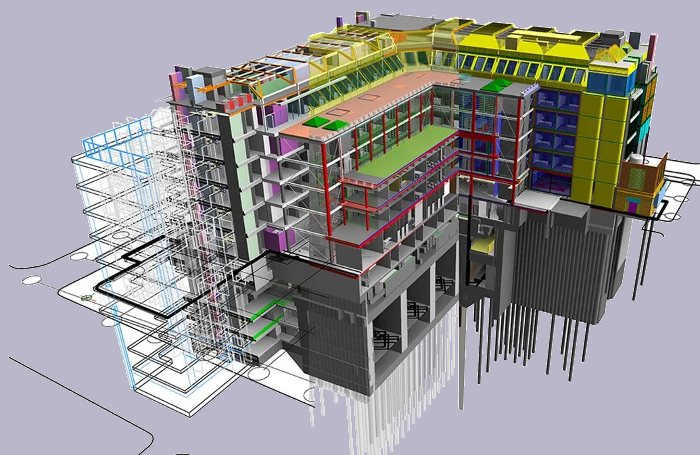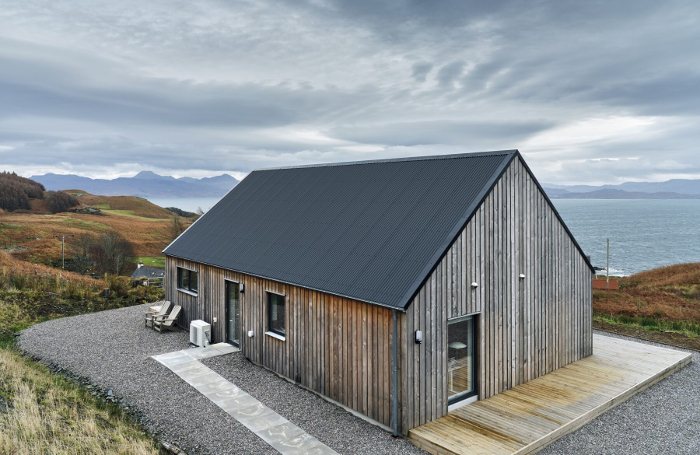“Significant disruption due to technology and supply chain innovations is not far away,” states Dale Sinclair, Head of Digital Innovation for Property and Building at WSP. “Architects need to embrace what’s happening, to be able to capitalise on the opportunities that will arise from these.”
Talk of ‘disruption’ might sound alarming to some. But disruption to an industry need not be negative. The technological changes Sinclair anticipates have the potential to make designing a building a more efficient, safer, and sustainable process.
Sinclair will be presenting at RIBA Future Leaders 2022: Business & Innovation on 8 June at the RIBA headquarters in London. He will give a wide-ranging presentation surveying the nature of technological innovations that are developing, and how they will impact on the buildings architects design.
The most significant agent of disruption, Sinclair anticipates, will be data. While architects are growing increasingly familiar with working in BIM, he sees a much wider amount of data becoming integrated into the decisions an architect makes.
“A typical BIM model will deliver COBie (Construction Operations Building Information Exchange) data,” he points out, “which helps record important project data such as equipment lists, product data sheets, and warranties.”
“But there is a mass of other data sets that we have across a project: acoustic measurements, fire safety issues, CFD (Computational Fluid Dynamics) models and others. In the future, we will connect all these pieces of the jigsaw.”
He foresees an architect designing the façade, for example, and simultaneous receiving cost data, carbon impact data, and fire safety in real time. While there are already tools for, say, assessing embodied carbon data (such as FCBSCarbon), Sinclair foresees the advent of real time data inputs for multiple different important design considerations.

“Currently, we iterate between those different data sets. In the future, those iterations will be minimised, and data placed at the fingertips of designers.”
It is a “smartening” of the design process in terms of both quantity and quality: the amount of data and the usefulness of it. Sinclair sees it as instrumental in facing the biggest challenges facing construction, the most significant being climate change.
He is clear sighted in his analysis of what must change in terms of materials, pointing out that a “styrofoam to straw bales” transition is required. This will require a radical shift in supply chains.
He anticipates an increasing emphasis on models and data, and less emphasis on drawings. This, he notes, is in some ways a convergence with the world of the product designer in industrial design. If this sounds alienating, it is notable that he cites R.House, based on the Isle of Skye, as a favourable example.

R.House is an offering that has become extremely successful for a small architecture practice, Rural House: putting an industrial product design model to sustainable and profitable uses. The timber-based houses are presented as a design collection that can be viewed online, complete with prices. The buildings are largely pre-fabricated: critical stages of construction are completed in a factory.
“Curiosity is key,” Sinclair concludes. “In a sense looking at future disruption to models of practices is all about the increasing importance, and convergence of science. We have climate science, materials science, and data science: all of these will have an impact.”
Thanks to Dale Sinclair, Head of Digital Innovation for Property and Building, WSP.
Text by Matt Milton. This is a Professional Feature edited by the RIBA Practice team. Send us your feedback and ideas.
RIBA Core Curriculum topic: Design, construction and technology.
As part of the flexible RIBA CPD programme, professional features count as microlearning. See further information on the updated RIBA CPD core curriculum and on fulfilling your CPD requirements as a RIBA Chartered Member.









